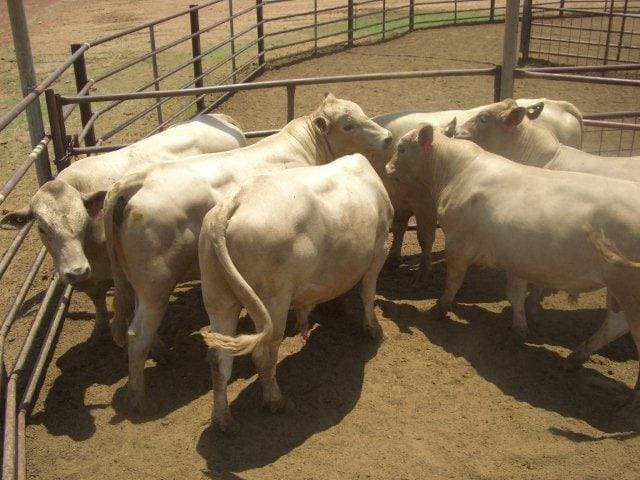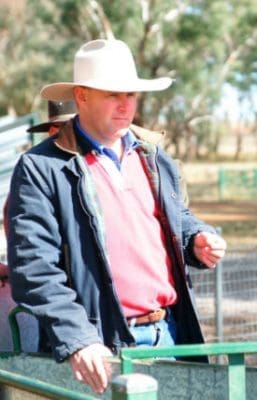
Composite bulls bred for extensive conditions by S. Kidman & Co
WITHIN a beef herd, genetic improvement is a measurable outcome. The rate of genetic improvement is determined by several factors including accuracy of selection.
There are two key factors that producers can control in genetic improvement: the first is accuracy of selection, while the second is selection intensity.
Many producers place high levels of selection pressure on their replacement females. However much of the work done to select animals can be undone or progress slowed by inaccuracies in selection decisions.
I most often encounter inaccurate selection decisions at bull sales where producers rely heavily on raw data and visual appraisal.
While visual appraisal is vital to assess many physical traits as well as a bull’s actual ability to move and walk, assessing genetic potential without accurate data is much more difficult.
In talking with producers who are using raw data to compare animals in a sale ring or in paddocks, there are several considerations that should be factored into the discussion.
Additional influences
While most producers readily acknowledge the role that nutrition and the pedigrees of animals have in determining a particular animals phenotype, these are not the only two areas to consider.
Additional influences, such as the age of the animal, the age of the dam, whether the bull was a single calf or a twin, or if it was produced as a result of ET are all non-genetic influences on the animal over and above nutrition and genetics.
It’s very difficult to know what these additional influences are or how to account for them in a selection decision.
The result often means a producer ends up selecting on differences that are a result of these multiple factors, rather than for the genetic differences in animals.
Challenges in selecting on raw data
Selection on raw data is further complicated by the heritability of individual traits. Highly heritable traits such as coat color can be an easy selection decision, as these traits can be easily passed on to progeny.
However as a trait becomes less heritable, it is harder to see these differences reflected on the basis of raw data alone. Producers attempting to manipulate traits to meet breeding objectives in areas such as female fertility have a harder job to select for improvement when they are reliant on raw data and visual observation. It is not an impossible task, however it is a much more difficult, and drawn out process over several generations.
There is also a third consideration: The relationship between the trait that has been recorded and the traits that are the focus of breeding decisions.
Not all traits follow linear progressions. In the case of scanned data for eye muscle area, the size of EMA at a particular point in time may not be reflective of increased muscularity, but rather a result of growth rate to that point in time. A larger EMA may be more reflective of the growth and weight of the animal when it was scanned.
I’m often concerned when producers place all their emphasis on the raw data of animals as the basis for their selection decisions. Without knowing the cumulative impact of the environment, feed and other non-genetic factors, bulls are being selected more on reflection of the year’s circumstances, rather than on their genetic capability.
This often works in a counterproductive manner to selection pressure placed on the breeding group at home.
As the 2019 breeding season progresses, I would be encouraging producers to make time to plan their breeding objectives and consider how they could make greater improvements with more accurate selection decisions.
Early planning allows time to consider a wider range of more accurate information and to consider the availability of data from Breedplan rather than reliance on raw data on sale day. Combined with selection pressure, these two areas do have a positive influence on genetic progress in any herd.

Alastair Rayner
Genetics editor Alastair Rayner is the Principal of RaynerAg, specialising in cattle selection, breeding and herd management.

Alastair, At what point do you consider the accuracies to be relevant to predictability, most will say above 90%. True calving intervals of Dams and Grand-dams will give a more accurate picture of fertility. EBVs can and should only be compared amongst contemporary groups, this is where true information about the limitations of Breedplan figures needs to be published. Selection of lowly heritable traits, such as Marbling, over time and generations of breeding, can be achieved by selection on Raw data figures. Most Breedplan figures seen at sales are actually computer projected estimates, as most animals have only had a weaning weight done on them, at best. Throw in terms such as seasonally adjusted and you have yourself a set of figures that any boardroom would be proud of. Regards, Brett.
Thanks for the comment, Brett. Higher accuracy EBVs increase the confidence a producer can have in the expression of the trait described. The challenge with many traits such as calving interval is many producers find this a difficult trait to measure accurately. As you correctly point out EBVs should be compared to contemporary groups, so it is essential for comparisons to be made on the Breed averages for the year of birth. Across the board there are many high accuracy figures provided by producers who do more than weaning weights. The introduction and uptake of Single Step test is making a significant increase in accuracies of EBVS, particularly in hard to measure traits and in young bulls. Alastair Rayner.
Hi Alistair, I have found in my experience of breeding ANGUS cattle that EBVs are a great platform in which to work off but as breeders we also need raw data to better calculate the animals potential value to the herd as many studs today only supply EBVs which only give estimates only so when we see accuracies between 55% to 75% and some cases higher we can only assume the figure is estimated on data collected and heritage and inheritable of those genetics but by providing raw data can better make the decision with more accurate actual data a call can be made on the individual animal … so hoping we all can make more better informed decisions … regards Jamie
Good day Alastair.
Thank you for bringing attention back to the basics of selection.
I have had fun over the years asking people to assess which animals in a mob will marble – and winning a few bets on the way.
I have also noted that EBVs seem to do a better job of predicting which bulls will sire high marbling steers than guessing – or tossing a coin. When (not if) we get paid for marbling it will be prudent to look at IMF% EBVs of the bulls that we buy.
Currently there are (in our breed) lots of differing opinions about how to select for ‘structural’ traits, ie feet and legs. Some buyers look at the bulls and make their own judgement. Some use raw scores given by accredited assessors. A few brave souls use EBVs.
My understanding is that EBVs have been useful in the dairy industry in sorting out feet issues and selecting udders that are useful. It will be interesting to see if we can do the same things to the feet and legs of our beef cows.
Keep up the good work.
David Murray
Kilburnie Angus